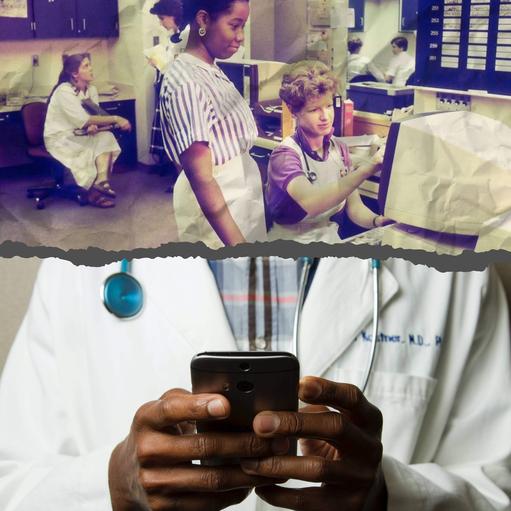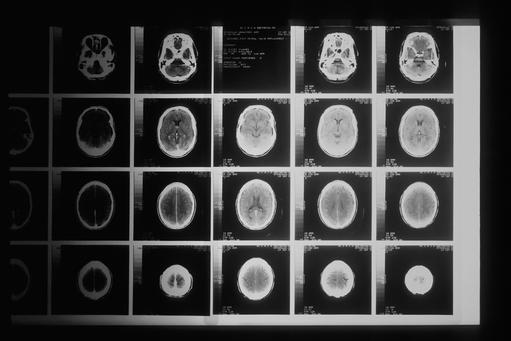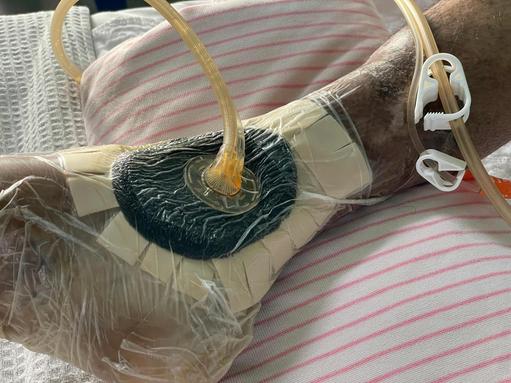Because GBM is known to be aggressive and difficult to treat, gene therapy holds potential for its treatment. One reason is that GBM is believed to be often caused by specific genetic mutations that lead to the uncontrolled growth of brain cells. Gene therapy can target these mutations directly and correct them by introducing healthy genes or inhibiting the effects of the faulty ones. Another advantage is that it can deliver therapeutic genes directly to the tumour site in the brain. This may be achieved by using viral vectors or other delivery systems, with the capability to cross the blood-brain barrier. By doing so, gene therapy can precisely target cancer cells while minimizing damage to healthy brain tissue. The therapy has the potential to enhance the immune system's ability to recognize and attack cancer cells by modifying immune cells or by introducing genes that boost the immune response against the tumour. Gene therapy for GBM is still in its infancy but holds potential for treating the disorder by directly targeting the genetic abnormalities responsible for the tumour's growth. Its ability to deliver therapeutic genes precisely and enhance the immune response against cancer cells makes it a significant avenue to pursue for future treatment options.
Companies conducting gene therapy R&D
Several pharmaceutical and MedTech companies are actively engaged in gene therapy R&D programmes to treat glioblastoma. Novartis is currently conducting ongoing clinical trials, which involve the utilization of modified viruses to deliver therapeutic genes. Genprex, a small clinical-stage biotech traded on Nasdaq and based in Austin, Texas, is developing gene therapies for cancer, including GBM. One of their notable products is GPX1, that employs a non-viral nanoparticle delivery system to introduce a therapeutic gene into tumour cells, inhibiting their growth. Genprex has achieved some early success with advanced non-small cell lung cancer (NSCLC). Mustang Bio, another clinical-stage biotech specializing in gene therapy R&D is focused on developing CAR-T cell therapies. This involves modifying a patient's own immune cells to recognize and selectively attack cancer cells. In May 2019, the company obtained Orphan Drug status from the FDA for an oncolytic virus, licensed from the Nationwide Children’s Hospital, which effectively kills cancer cells and is used in the treatment of GBM.
In April 2019, the FDA granted Ziopharm Oncology Fast Track Designation for its treatment, Ad-RTS-hIL-12 plus veledimex, which targets GBM. The therapy involves delivering a gene that produces a protein to stimulate the immune system's response against the tumour. Initial studies produced promising results in a small number of GBM patients. However, following an activist attack by WaterMill Asset Management Corp, Ziopharm underwent a reorganization, appointed a new CEO, abandoned the clinical study, and rebranded itself as Alaunos Therapeutics, relinquishing its GBM asset.
Tocagen, a clinical-stage, gene therapy company based in San Diego, US, is dedicated to developing treatments for cancer, including GBM. The company developed two drugs, Toca 511 and Toca FC, that can cross the blood-brain barrier and target tumour cells. The drugs work together and involve delivering a therapeutic gene into tumour cells and then activating it with an oral medication to selectively kill the cancer cells. In April 2017 the company listed on Nasdaq and later that year, its lead product received FDA Breakthrough Therapy Designation and Priority Medicines (PRIME) designation from the European Medicines Agency for the treatment of high grade gliomas (HGG). However, in September 2019, Tocagen announced that its phase III randomized, multi-centre clinical trial consisting of 380 patients with recurrent HGG failed the primary endpoint of overall survival compared to standard of care treatment. To get so far in the process and not yield significant results for survival is a significant setback. Shares in the company fell ~80%, half of its employees were made redundant, and the company set about restructuring. Nanotechnology Nanotechnology involves working with tiny particles (nanoparticles), which are thousands of times smaller than the width of a human hair and can be engineered and manipulated to have special properties and functions. One area the technology is making significant contributions is in the field of medicine, particularly in the development of new therapies for challenging diseases like glioblastoma. Nanotechnology-based therapies for GBM work by utilizing nanoparticles that are designed to specifically target cancer cells in the brain. These can be loaded with drugs or other therapeutic agents to kill or slow down the growth of cancer cells. Scientists design nanoparticles in such a way that they can cross the blood-brain barrier and reach tumour cells more efficiently. Once the particles reach the tumour cells, they release therapeutic agents in a controlled and targeted manner. This precision helps to minimize the damage to healthy brain cells and reduces side effects compared to traditional therapies. Nanoparticles can be engineered to respond to specific signals or conditions within the tumour environment, allowing for even greater precision in drug release. The technology also allows for non-invasive imaging and diagnosis of GBM. Scientists have developed nanoparticles that can be used as contrast agents in imaging techniques such as magnetic resonance imaging (MRI), which can help visualize the tumour and monitor its response to treatment over time. While more R&D is needed, the use of nanotechnology holds promise for improving outcomes and quality of life for patients with GBM and other challenging cancers.
Companies conducting nanotechnology R&D
MagForce, a publicly traded German medical device company is among the early developers of novel nanotechnology-based cancer treatments. Its lead offering, the NanoTherm therapy system, is the first and only nanotechnology-based therapy to receive European regulatory approval (CE marking) for the treatment of brain tumours. The system utilizes magnetic nanoparticles to heat and destroy tumour cells. The process involves injecting magnetic iron oxide nanoparticles into the tumour. Then, MagForce’s therapeutic device, the NanoActivator, is used to treat the affected area with an alternating magnetic field, which generates heat, leading to localized tumour cell destruction. The company is now working on a strategy to market its NanoTherm therapy outside Germany aided by a €35m loan from the European Investment Bank under the European Fund for Strategic Investments.
Imunon previously, Celsion Corporation is a New Jersey, US-based clinical-stage oncology-focused company that has been working on a nanoparticle-based multi-modal drug delivery system called ThermoDox®. The system utilizes heat-activated liposomal nanoparticles to deliver chemotherapy drugs directly to tumour sites, including GBM. The nanoparticles release the drug when exposed to focused ultrasound or radiofrequency ablation, which selectively activates the drug within the tumour. In September 2022, Celsion changed its name to Imunon. “With this name change, we are underscoring our commitment to create a new category of medicines. With a strong balance sheet supporting current operations into 2025, we are well positioned to build a differentiated company to deliver the promise of our mission”, said Corinne Le Goff, president, and CEO. In February 2023, the company announced the commencement of patient enrolment of a clinical trial to evaluate a therapy for ovarian cancer, another “difficult to treat cancer”.
BIND Therapeutics was a biotech co-founded in 2007 by Robert Langer, a pioneer of many new technologies and widely regarded for his contributions to biotechnology. BIND engineered a nanomedicine platform developing Accurins®, a novel targeted and programmable class of therapeutics designed to target specific cells or tissues and concentrate a therapeutic payload at the site of disease. In 2013, the company raised a US$70m in an IPO, and had early success with a Phase I clinical trial comprised of 28 patients. The study established the safety and tolerability of BIND-014 in patients with advanced or metastatic solid tumour cancers, and in 2015, its findings were presented at the American Association for Cancer Research (AACR) Annual Meeting. Despite this success, in May 2016 BIND filed for voluntary Chapter 11 of the US bankruptcy code and its assets were acquired by Pfizer for US$40m. The novel therapy continued to be developed but not for GBM; findings of a phase II clinical study comprised of 42 patients with metastatic prostate cancer, was published in the July 2018 edition of JAMA Oncology, and reported the median radiographic progression-free survival to be 9.9 months. Tumour-Treating Fields Tumour-Treating Fields (TTFields) is an innovative treatment approach used for certain types of cancer, including GBM. It is a therapy that utilizes electromagnetic fields to disrupt the growth and division of cancer cells and involves the use of a device that generates low intensity alternating electric fields, which are designed to interfere with the process of cell division; a crucial step in the growth and spread of cancer cells. By applying electric fields to the tumour site, TTFields aim to disrupt cancer cells' ability to multiply and form new tumour masses. The significance of the technology for GBM lies in its potential to provide an additional treatment option that can complement existing therapies and can be used in combination with traditional treatments: surgery, radiation therapy and chemotherapy. One of its advantages is that it specifically targets cancer cells while sparing healthy tissues. The electric fields disrupt the division of actively dividing cells, which is a characteristic of cancer. Healthy cells, which typically have a slower rate of division, are less affected. This approach may lead to fewer side effects compared to other treatment modalities. Clinical studies have shown that TTFields can improve overall survival and progression-free survival in patients with glioblastoma when used in combination with standard treatments. The therapy has been approved by regulatory agencies, including the FDA, for the treatment of GBM and is being increasingly integrated into clinical practice.
Companies conducting TTFields R&D
Novocure is a pioneering MedTech oncology company that developed and commercialized the Optune®, a non-invasive portable device, which delivers TTFields therapy and has been approved by the FDA for the treatment of GBM. The company was founded in Haifa, Israel in 2000 by Yoran Palti, (Professor of Physiology and Biophysics at the Technion Israel Institute of Technology in Haifa). NovaCure grew to become a Nasdaq traded corporation with a market value of >US$7bn, >1,300 employees, annual revenues of ~US$0.54bn, and operations in the US, Europe, and Asia.
Palti hypothesized that alternating electric fields in the intermediate frequency range could disrupt cancer cell division and cause cancer cell death. He set up a home laboratory, where he demonstrated that, when applied at tumour cell-specific frequencies (200 kHz for GBM), alternating electric fields disrupt cell division, leading to cancer cell death but sparing healthy cells. The results motivated him to set up Novocure. The company’s second-generation Optune device has design improvements intended to enhance patients’ experience with TTFields treatment. The device consists of a set of adhesive patches or arrays that are placed directly on the patient's scalp over the area where the tumour is located. These are connected to a portable device that generates the electric fields. It weighs ~1.2 kg (~2.7 lbs) and is worn continuously while the patient carries on with their daily activities while receiving treatment.
On 6 June 2023, NovoCure’s shares crashed ~43% after the failure of a clinical trial of Optune on non-small cell lung cancer (NSCLC) patients. The company plans to file for US Premarket Approval (PMA) for TTFields in treating NSCLC later this year, and expects to announce results from three other late-stage studies of its device targeting other indications by the end of 2024.
QV Bioelectronics is a UK-based start-up founded in 2018 by a biomedical engineer and a neurosurgeon. The company’s lead offering, referred to as GRACE, (Glioma Resection Advanced Cavity Electric field therapy), employs electric field therapy like that of NovoCure, to slow the growth of GBM. Different to NovoCure’s Optune, GRACE is positioned to be implanted into patients already undergoing surgery. After surgery, it delivers therapy to the tumour resection margins where most of the glioblastoma recurrence takes place. The device is expected to operate without causing harm to healthy brain cells. To-date, QV has raised ~£3.5m, (~US$4.5m) and has received ~£2M (~US$2.5) in non-dilutive grants, including £860k (~US$1M) in March 2023 from Innovate UK, the UK’s national innovation agency. The company plans to use recent proceeds to expand its preclinical studies, finalise the initial design of GRACE, and develop a commercial strategy and regulatory pipeline as it prepares for clinical grade testing.
Part 2
Glioblastoma research: Government Support and the Rise of Innovative Players
Universities and research institutions engaged in GBM R&D
In addition to companies, which we described in Part 1 of this Commentary, universities and research institutions around the world are actively engaged in R&D efforts aimed at exploring novel therapies for glioblastoma. American universities and research institutes are particularly well placed as the US leads the world in investment in biomedical research. For instance, its National Institutes of Health (NIH) annually invests >US$40bn in medical research throughout the US. However, China is catching up (see below). One leading American institution that benefits from this US policy is the Massachusetts Institute of Technology (MIT), where researchers have been investigating innovative approaches such as nanotechnology-based drug delivery systems and targeted therapies to combat glioblastoma. In the UK, the University of Oxford has made significant strides in developing immunotherapies and personalized treatments for GBM. In Canada, the University of Toronto’s researchers are focussed on novel gene therapies and the development of targeted nanoparticles for improved drug delivery to GBM tumours. In Australia, the University of Sydney’s Brain and Mind Centre is actively involved in the exploration of stem cell-based therapies and advanced imaging techniques to better understand the tumour’s biology and improve treatment outcomes. These academic institutions, together with many others globally, are actively searching for breakthrough therapies for patients battling glioblastoma. University medical research groups can receive funding from medical research charities, as well as governments. However, a private company may licence a technology from a university or research institute and fund, or co-fund, clinical trials.
The Case for increased government funding for GBM R&D
In Part 1, we described how glioblastoma is characterized by its rapid progression, resistance to conventional treatments, and complex biological nature, which contribute to the difficulty in developing effective therapies. The intricate interplay between tumour cells and the brain, along with the blood-brain barrier, makes drug delivery and targeted treatment options particularly challenging. Given the multifaceted obstacles involved, it seems unreasonable to expect private entities to solely bear the burden of funding R&D for such a rare and complex disease. Glioblastoma affects a relatively small number of individuals, limiting the potential market for pharmaceutical companies and MedTechs. The high costs associated with R&D, clinical trials, and regulatory approval create a significant financial risk for private investors. The lack of substantial profitability prospects may discourage private entities from allocating resources to GBM research. In contrast, governments have a vested interest in public health and can allocate funding based on societal needs rather than immediate profitability.
Government-funded research can foster collaboration among scientists, clinicians, and institutions. By providing a platform for shared knowledge, data, and resources, governments are well positioned to facilitate scientific breakthroughs for complex conditions. GBM research would benefit from collective efforts, allowing scientists to efficaciously pool their expertise to accelerate progress. Government funding can enable the establishment of research consortia, collaborative networks, and specialized centres dedicated to glioblastoma R&D. Developing innovative therapies for the condition requires sustained long-term commitment. Private entities may be inclined to prioritize shorter-term projects with faster returns on investment. In contrast, governments have the capacity to pursue research with longer horizons and tolerate greater risks. By investing in long-term R&D, governments can support the exploration of unconventional ideas, disruptive technologies, and novel approaches that may yield significant advancements in glioblastoma treatment. Also, government involvement in funding R&D can prioritize the development of therapies that are accessible and affordable to all patients. Private entities may choose high-profit-margin treatments, potentially leading to a lack of affordability for many individuals. Government-funded R&D initiatives can ensure that breakthroughs in GBM treatment reach the wider population, reducing health disparities and ensuring equitable access to potentially life-saving interventions.
Chinese R&D in novel GBM therapies
In a thought-provoking book, Technocracy in America, Parag Khanna presents an argument that challenges the conventional wisdom surrounding economic systems and their impact on technological development. Khanna highlights the success of China’s blend of market economy and state-owned enterprises in fostering the growth of cutting-edge medical technologies. Drawing comparisons with Western liberal democracies, Khanna suggests that China’s technocratic approach, characterized by strategic direction and state-led initiatives, offers distinct advantages in driving advancements in the high-tech medical sector. Khanna prompts us to reassess our assumptions about the most effective pathways to progress in the realm of medical technology.
The development of a ‘Healthy China 2030’ is central to the Chinese Government’s agenda for health and development, and has the potential to reap benefits for the rest of the world. President Xi Jinping has put health at the centre of the country’s policy-making machinery, making the need to include health in all policies an official government policy. The Chinese government has expressed a commitment to supporting biomedical R&D, including efforts aimed at addressing rare diseases like glioblastoma. Specific initiatives may receive funding and support through programmes such as the National Natural Science Foundation of China (NSFC), China's National Key R&D Programmes (NKPs), and collaborations between domestic academic institutions, research centres, and pharmaceutical companies. In China, efforts are underway to develop innovative immunotherapeutic approaches, including immune checkpoint inhibitors, chimeric antigen receptor (CAR) T-cell therapy, and peptide-based vaccines. These approaches aim to enhance the immune system's ability to recognize and eliminate GBM cells. China is also exploring gene therapy approaches for GBM treatment. One notable example is the use of genetically modified viruses to deliver therapeutic genes directly into tumour cells. Researchers have conducted clinical trials, such as using oncolytic adenoviruses and retroviruses, to induce tumour cell death and stimulate the immune response against glioblastoma. Nanotechnology-based strategies are being explored to improve drug delivery and enhance the efficacy of GBM treatment. Scientists are developing nanoparticles and nanostructured systems capable of crossing the blood-brain barrier and delivering therapeutic agents directly to the tumour site, which aim to increase drug accumulation in tumours while minimizing systemic side effects. China is also involved in stem cell-based therapies that hold promise for glioblastoma treatment. Researchers are investigating the use of neural stem cells, mesenchymal stem cells, and induced pluripotent stem cells for targeted drug delivery, immune modulation, and regenerative purposes. These approaches aim to improve patient outcomes and overcome treatment resistance to GBM. Further, Chinese researchers are investigating the potential of traditional Chinese medicine (TCM) for glioblastoma treatment. Studies have focused on identifying bioactive compounds from medicinal plants and evaluating their anti-tumour effects, as well as exploring the synergistic effects of TCM in combination with conventional therapies.
Takeaways
This Commentary describes some of the ongoing developments of novel therapies for GBM mainly at the company level and suggests reasons why it is unreasonable for private companies to bear the main burden of finding therapies for glioblastoma. We also suggest that ongoing R&D initiatives at the company level should be approached with caution as their effectiveness and safety are still being investigated through clinical trials. Further, we mention that universities and research institutes worldwide are actively engaged in R&D programmes, involving multidisciplinary teams dedicated to various aspects of GBM. These efforts encompass understanding the underlying biology, exploring innovative treatment strategies, conducting clinical trials, and investigating novel therapeutic approaches. Further, we suggest that because GBM is a public health issue, governments might consider increasing their investments in, and their coordination of, GBM R&D. The Commentary draws attention the Parag Khanna’s book, Technocracy in America, which encourages us to re-examine our assumptions about the most effective policies to accelerate the development of medical technology and suggests that China’s model of state capitalism appears to have advantages over Western liberal democracies.
Regarding medical R&D landscape at the company level, it seems reasonable to suggest that the unique challenges and market dynamics associated with glioblastoma may lead to a more significant presence of smaller MedTechs and start-ups in this field. Such entities often possess the ability to focus on niche areas and take risks in pursuing innovative solutions. Their streamlined decision-making processes and flexibility in allocating resources specifically to GBM research, driven by scientific curiosity, patient advocacy, and potentially disruptive innovation, provide them with a competitive advantage. Conversely, many large diversified MedTechs may be less inclined to invest in GBM R&D compared to more prevalent cancers such as breast, lung, or colon cancer. This is primarily due to the relative rarity of GBM, resulting in a smaller patient population. From a business perspective, the smaller market size may be less financially attractive to established MedTechs seeking larger patient populations with higher profit potential. The highly complex and challenging nature of glioblastoma, including its location, infiltrative behaviour, and resistance to standard treatments, poses significant obsacles in developing effective therapies. The complexity and risks associated with GBM R&D present substantial challenges for many companies with more extensive resources and stakeholders to manage, as the potential for failure or setbacks is higher.
|

































